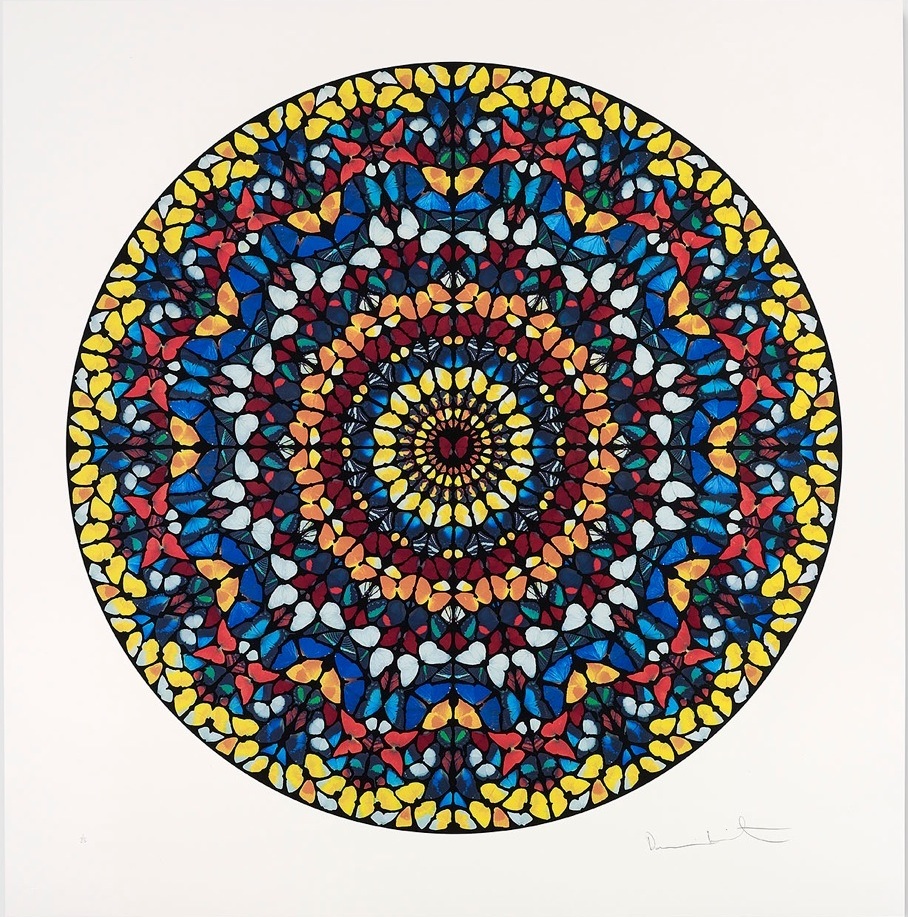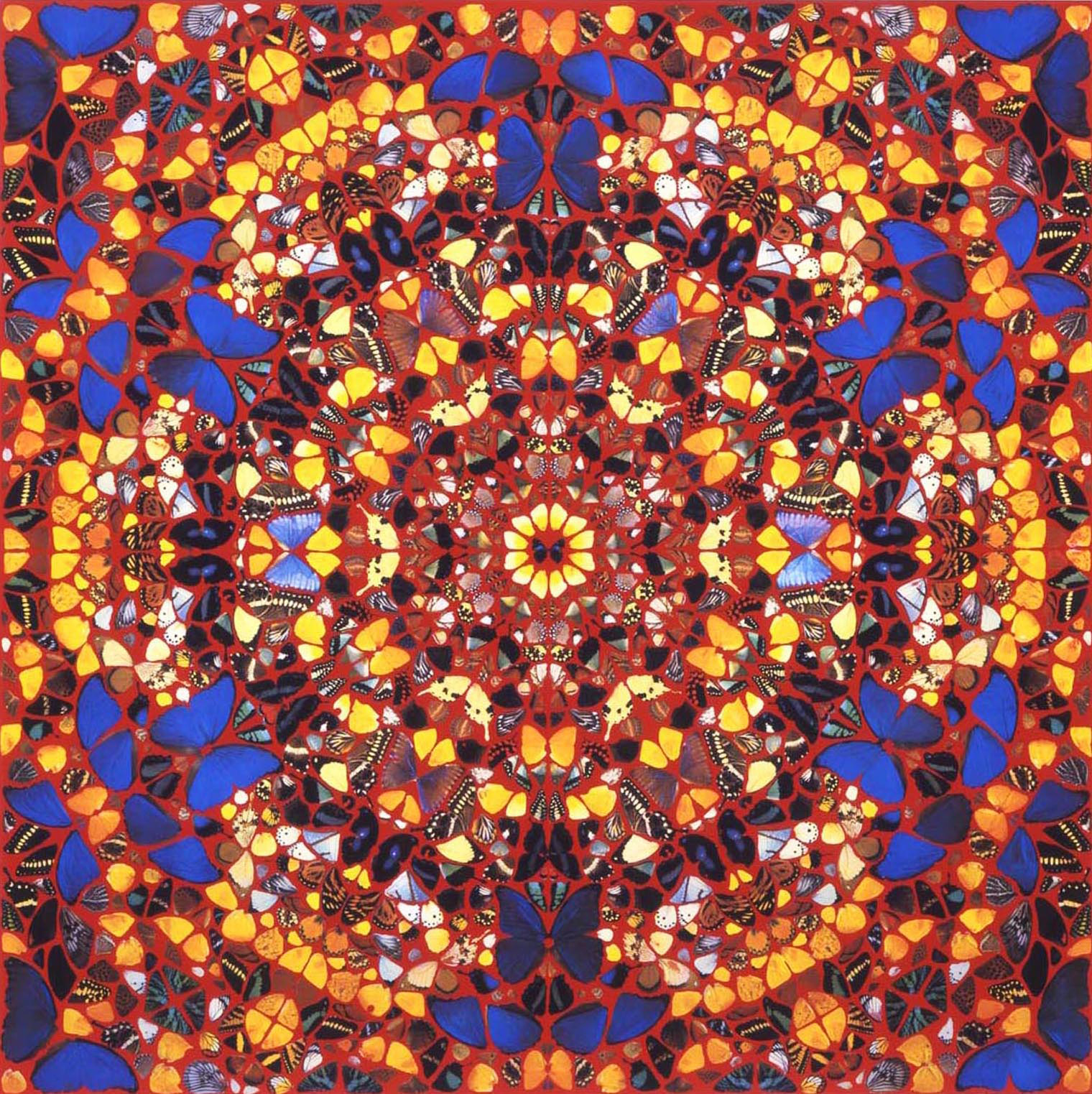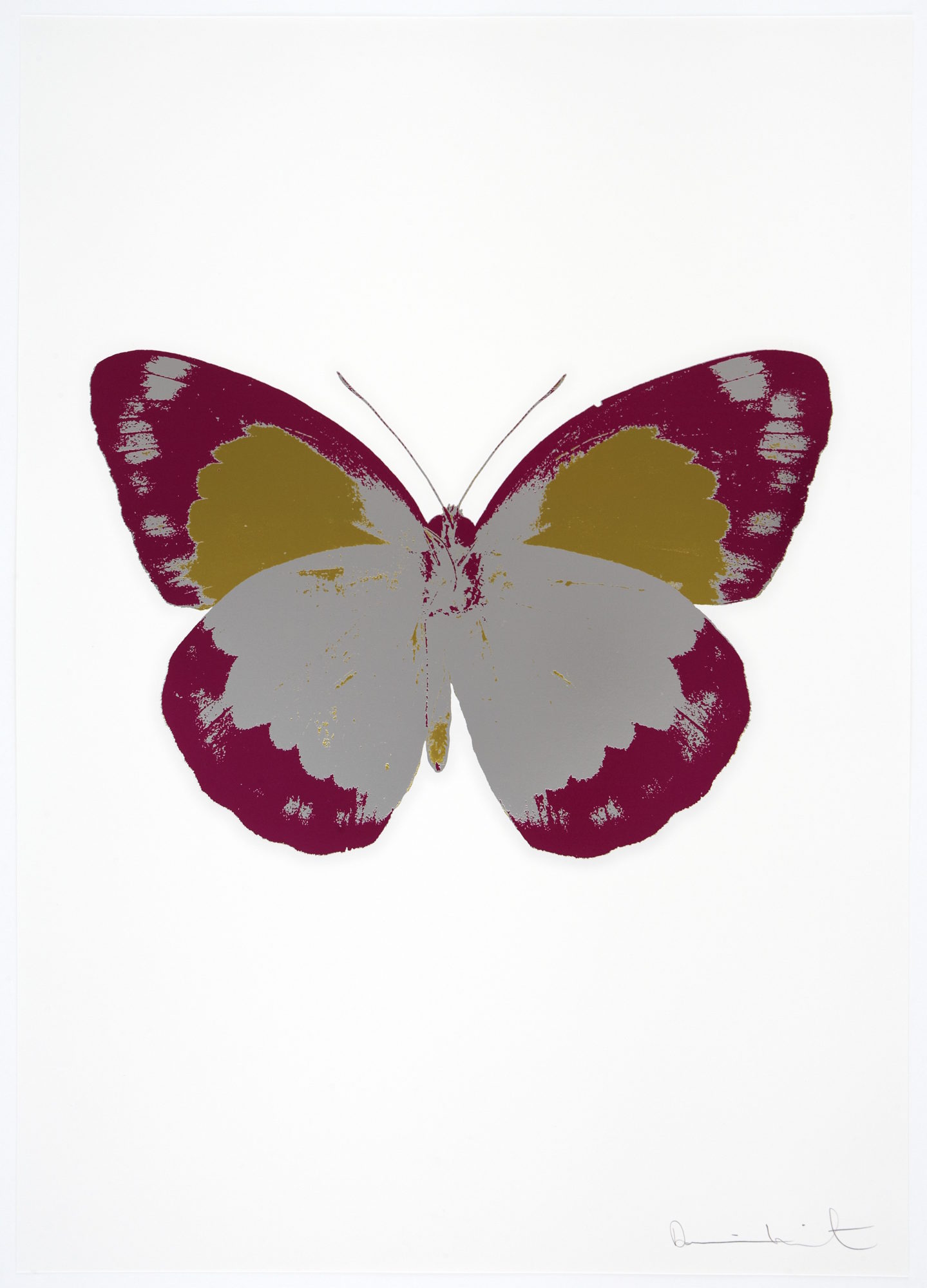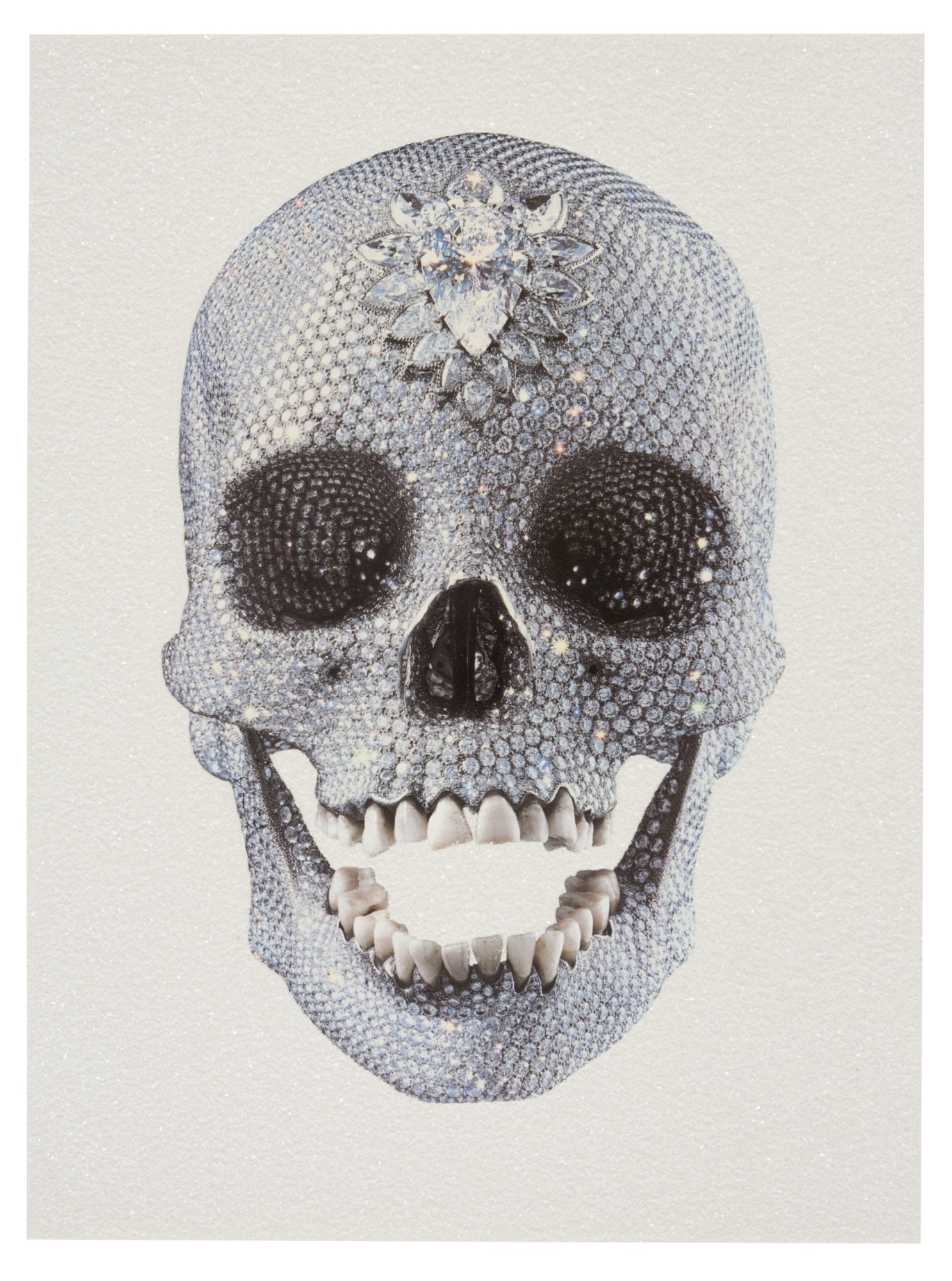Damien Hirst – Entreaty
Damien Hirst, Entreaty is a large size original Silkscreen print from the signed and numbered edition of 25.
A successful and controversial artist, Damien Hirst was born in Bristol, England, on June 7, 1965. He emerged as a leading figure in the Young British Artists movement in the late 1980s and 1990s. His works, which include dead animal displays and spin-art paintings, have sold for exceptionally high prices. Hirst is one of the wealthiest artists living today.
Hirst revisited the theme of butterflies in an installation at the Tate Modern in 2012. Two windowless rooms were filled with live butterflies, brought in daily by the butterfly expert from London’s Natural History Museum and swept up by the museum staff when they perished. While some viewers were distressed that the butterflies were not in their natural habitat (animal rights activists were not amused), others appreciated the opportunity to contemplate the fragility of life. As one viewer commented, “There’s a terrific poignancy about them because their lifecycle is so short and they are vulnerable and delicate.”
| Title | Entreaty |
|---|---|
| Medium | Silkscreen |
| Year | 2013 |
| Edition | 25 |
| Signature | Signed, numbered |
| Size | 56 x 57 (in) 142 x 145 (cm) |
| Price | SOLD |
Description
Damien Hirst, Entreaty is a large size original Silkscreen print from the signed and numbered edition of 25.
A successful and controversial artist, Damien Hirst was born in Bristol, England, on June 7, 1965. He emerged as a leading figure in the Young British Artists movement in the late 1980s and 1990s. His works, which include dead animal displays and spin-art paintings, have sold for exceptionally high prices. Hirst is one of the wealthiest artists living today.
As a teenager, Hirst liked to look at illustrated pathology books, fascinated by the images of disease and injury. He also showed an interest in drawing, a passion his mother supported. His father, a car mechanic, left the family when he was only 12 years old.
In 1991, Hirst had his first solo exhibition at the Woodstock Street Gallery in London. He also participated in the Young British Artists show at the Saatchi Gallery the following year. There he displayed “The Physical Impossibility of Death in the Mind of Someone Living,” a 14-foot-long glass tank with a shark preserved in formaldehyde. The shark had been bought from an Australian fisherman.
Hirst continued to set the art world on fire with his work at the 1993 Venice Bienniale, a renowned international art exhibition. There he showed “Mother and Child Divided,” an installation piece that featured a bisected cow and her calf displayed in four vitrines, or glass cases, filled with formaldehyde. With his controversial and sometimes gruesome works, Hirst soon became one of the best known artists in Britain. He won the prestigious Turner Prize in 1995. “It’s amazing what you can do with an E in A-Level art, a twisted imagination and a chainsaw,” Hirst said in his acceptance speech.
Even though his career was thriving, not every exhibit went as planned. He wanted to bring rotting cattle for an exhibit in New York City in 1995, but he was stopped by the city’s health authorities. Hirst, however, enjoyed a warm welcome the following year with a show at New York’s Gagosian Gallery.
In addition to his glass tank works, Hirst has made paintings and sculptures. He explored his interest in the pharmacological age with such canvases as “Controlled Substances Key Painting” (1994). The work was part of a series known as spot paintings, but Hirst only painted a few of them. He had other artists carry out his visions, much like Andy Warhol had done.
Additional information
| Title | Entreaty |
|---|---|
| Medium | Silkscreen |
| Year | 2013 |
| Edition | 25 |
| Signature | Signed, numbered |
| Size | 56 x 57 (in) 142 x 145 (cm) |
| Price | SOLD |









